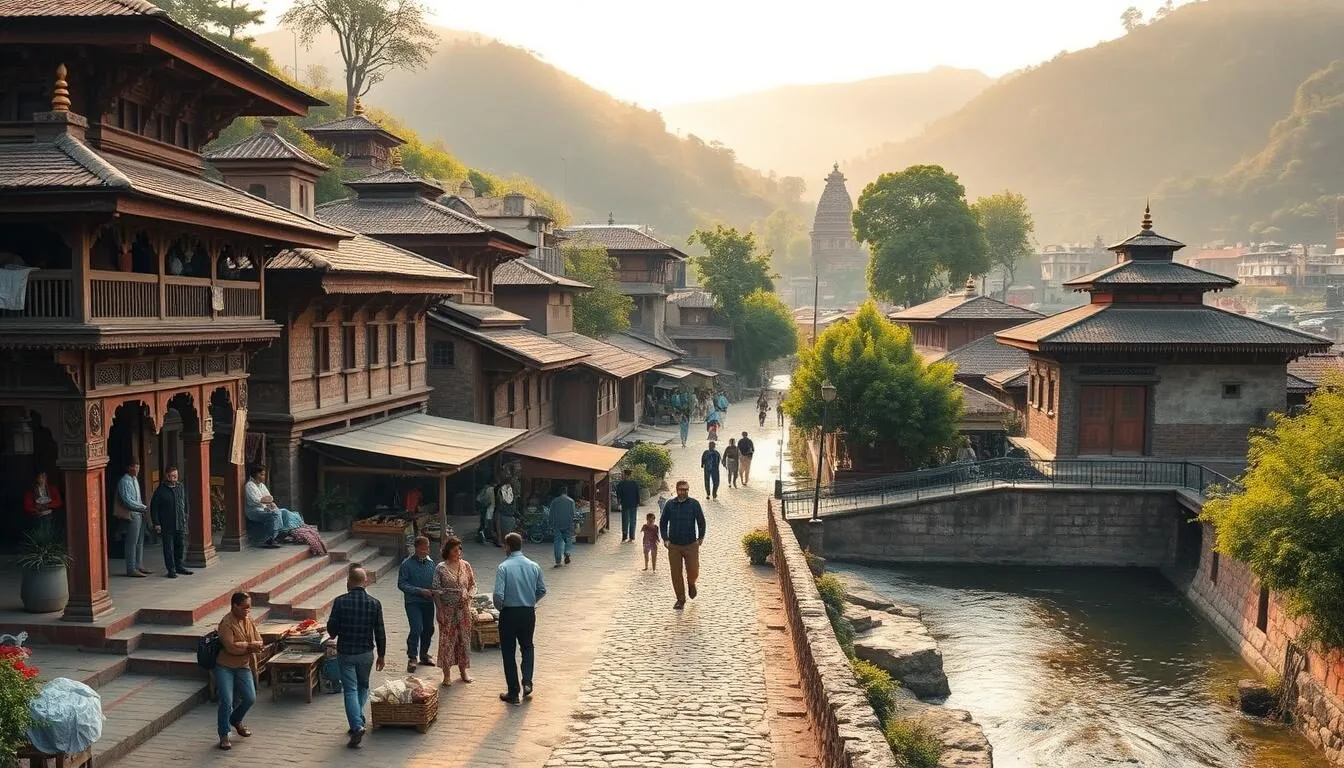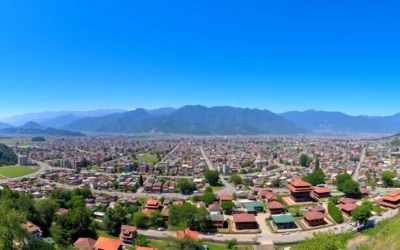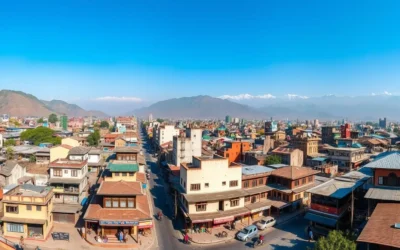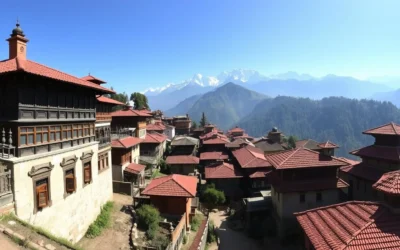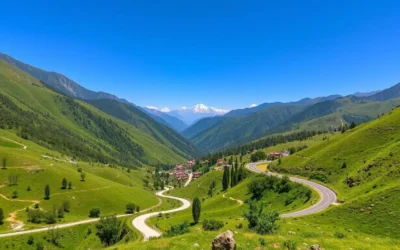✓ Accommodations✓ Flights✓ Rental Cars
Imagine stepping into a medieval town that has been frozen in time, where the air is thick with tradition and the streets are lined with ancient temples. You are now in Panauti, one of the oldest and best-preserved towns in Nepal’s Kathmandu Valley.
Panauti offers an authentic cultural experience, away from the crowds of Kathmandu. Situated at the confluence of the Rosi and Punyamati rivers, this heritage-rich town is steeped in history and mystique. You can explore its well-preserved Newari architecture, visit ancient temples, and enjoy heritage walks.
Whether you’re looking for a day trip or an overnight stay, Panauti has something for everyone. This guide will help you discover the top attractions and activities to make the most of your visit.
Discovering the Ancient Town of Panauti
As you step into Panauti, you are transported back in time to the medieval era of Nepal. This ancient town, nestled in the Kathmandu Valley, is a treasure trove of history and culture.
Historical Background and Significance
Panauti was built during the reign of Ananda Malla (1274-1310 CE), although a golden scripture dated 1385 in the town’s Indreshwar Temple attributes its founding to King Harisingh Dev. Regardless of its exact origin, Panauti is regarded as one of the oldest towns in the Kathmandu Valley. It became part of Bhaktapur during the 17th century under the Malla empire, later gaining independence in 1763 when King Prithi Shaw recognized it as a township.
Why Panauti Should Be on Your Nepal Itinerary
Panauti offers an authentic glimpse into medieval Nepal, untouched by the crowds that flock to larger destinations like Kathmandu and Bhaktapur. Visiting Panauti feels like stepping back in time, with its well-preserved Newari architecture and traditional way of life. The town receives far fewer tourists, allowing for a peaceful and authentic experience. You can explore Panauti thoroughly in a day trip from Kathmandu, but staying overnight provides a more immersive experience. Panauti also serves as an excellent base for exploring nearby attractions like Namo Buddha Monastery, making it a perfect blend of cultural heritage, natural beauty, and local experiences.
- Experience the authentic medieval Nepalese culture.
- Enjoy a peaceful atmosphere with fewer tourists.
- Explore the town’s well-preserved Newari architecture.
- Use Panauti as a base to visit nearby attractions.
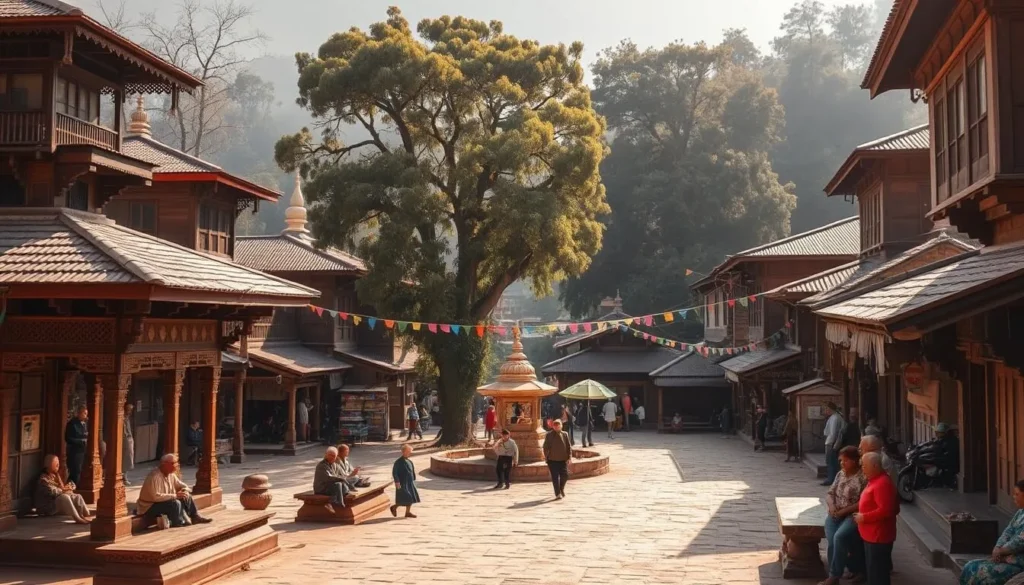
How to Get to Panauti
Traveling to Panauti from Kathmandu can be done in multiple ways, catering to different budgets and preferences. The town is well-connected by public transport, making it easily accessible for tourists.
Transportation Options from Kathmandu
There are several transportation methods to Panauti depending on your budget and schedule. Buses run from Ratna bus park every 15 minutes or so and are the most budget-friendly way to reach Panauti, costing just 60 rupees but taking 1 hour and 45 minutes on average. Taxis can be expensive unless you book a two-way trip, which can cost up to 5,000 rupees with a 5-hour wait. While mountain biking to Panauti is possible, the current road conditions in the Kathmandu Valley mean high traffic and pollution, making it less desirable. You could also rent a motorbike, but you’ll need a license and a safe place to park it, such as near the tourist office.
Best Time to Visit
The best time to visit Panauti is during the spring (March to April) and autumn (October to November), when the weather is pleasant and the mountain views are clear. Visiting early in the day allows you to maximize your exploration time, especially if you’re coming on a day trip from Kathmandu. Weekdays are generally less crowded than weekends, providing a more peaceful experience. Here are some tips to make the most of your visit:
- October to November and March to April are ideal, with pleasant weather and clear mountain views.
- Winter months (December to February) can be chilly but offer clear skies and fewer tourists.
- The monsoon season (June to September) brings heavy rainfall, making it less enjoyable and potentially hazardous.
- Check the local festival calendar, as visiting during festivals like Panauti Jatra offers a unique cultural experience.
- Plan your visit around the opening hours of key attractions like the Indreshwar Temple Complex and Panauti Museum.
Panauti, Nepal: Best Things to Do – Top Picks
As you step into Panauti, you’ll discover a treasure trove of historical and cultural attractions. This ancient town is renowned for its well-preserved heritage sites, making it an ideal destination for those interested in history and culture.
Overview of Must-See Attractions
Panauti boasts some of Nepal’s most significant historical sites, including the oldest pagoda-style temple in the country. The town’s heritage sites are remarkably well-preserved, offering a glimpse into Nepal’s rich cultural past. Visitors can explore the Indreshwar Temple Complex, Tribeni Ghats, and the ancient streets, each providing a unique insight into Panauti’s history.
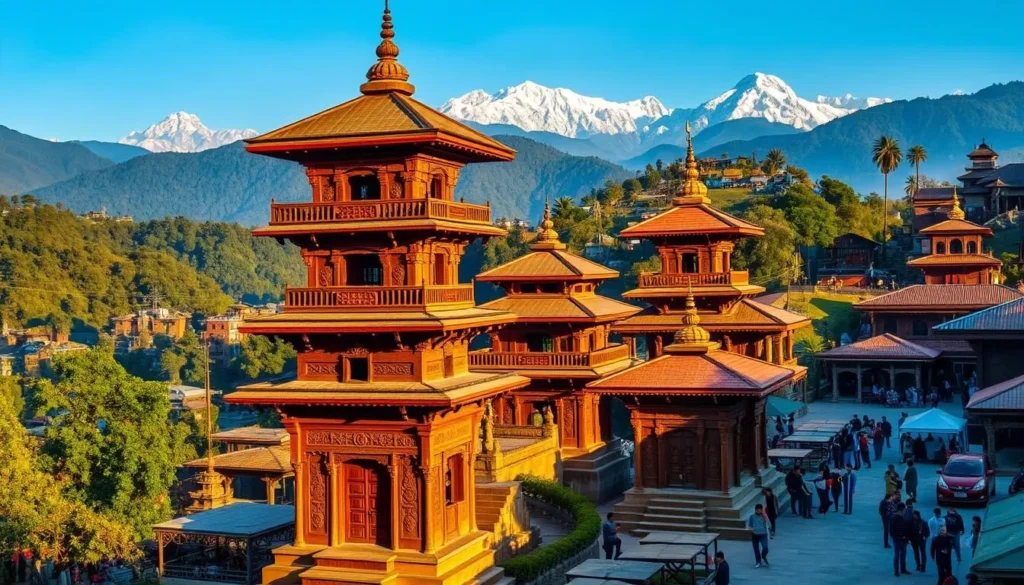
Planning Your Itinerary
When planning your visit to Panauti, consider whether you’re making a day trip or staying overnight. For a day trip from Kathmandu, allocate at least 4-6 hours to explore the town’s major highlights. Starting from the bus park, you can follow a logical route that minimizes backtracking. Staying overnight, however, allows you to experience Panauti early in the morning and late in the evening, avoiding the crowds of day-trippers.
Engaging a local guide can significantly enhance your experience, providing deeper insights into Panauti’s history and culture. You may also consider combining your visit with nearby attractions like Namo Buddha for a more comprehensive experience. Don’t forget to allow some time for spontaneous exploration, as wandering through Panauti’s ancient streets can lead to some of the most charming discoveries.
Exploring the Indreshwar Temple Complex
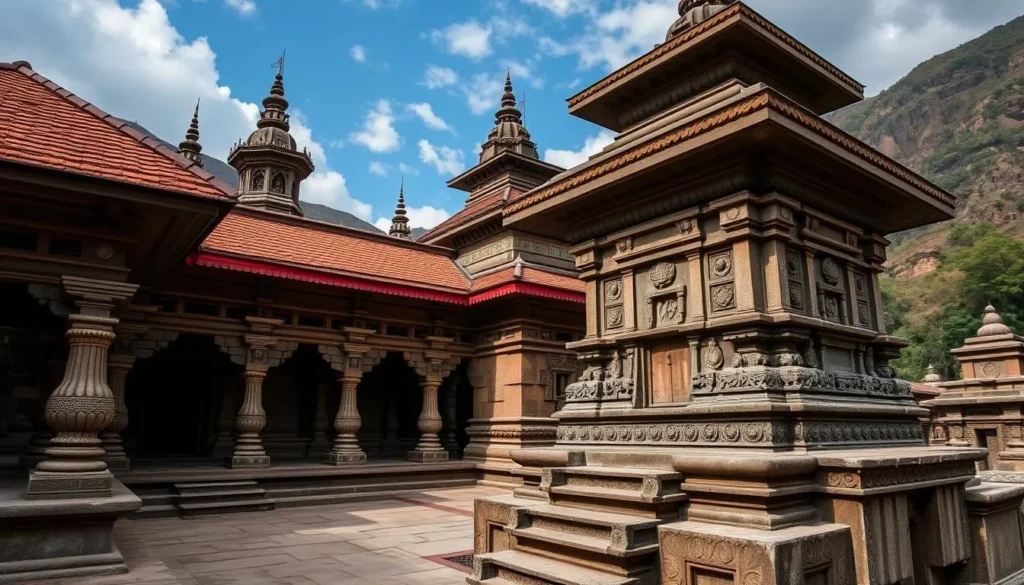
As one of the oldest and most revered temple complexes in Nepal, Indreshwar in Panauti is a fascinating blend of history, architecture, and spirituality. This complex is not just a religious site but a living testament to the town’s rich cultural heritage.
The Oldest Pagoda-Style Temple in Nepal
The Indreshwar Temple is considered one of the oldest pagoda-style temples in Nepal, exemplifying traditional Newari architecture. Its multiple roofs and intricate woodcarvings are a testament to the craftsmanship of the Newari people. The temple’s design is characterized by its tiered roofs, which are adorned with carved wooden struts, some of which feature erotic carvings, albeit more subdued than those found in other temples in the Kathmandu Valley.
Architectural Highlights and Religious Significance
The Indreshwar Temple Complex is not only significant for its architecture but also for its religious importance. According to Hindu mythology, the temple houses a large lingam placed by Lord Shiva himself to help Indra overcome his sins. The complex is also linked to the legend of the mystical river Padmavati, said to join the Rosi and Punyamati rivers at the Tribeni confluence. Other notable structures within the complex include the white-domed Narayan Temple, which was restored after being damaged in the 2015 earthquake, and the Unmatta Bhairab Temple, known for its provocative statue of Bhairab.
The complex remains a vital religious site where locals continue to worship and perform rituals, making it a vibrant and dynamic part of Panauti’s cultural landscape.
Tribeni Ghats: The Sacred Confluence
As you wander through Panauti, you’ll eventually find yourself at the serene Tribeni Ghats, a sacred confluence that embodies the spiritual essence of this ancient town. The site is not only a natural wonder but also a hub of religious activity, drawing people from various backgrounds.
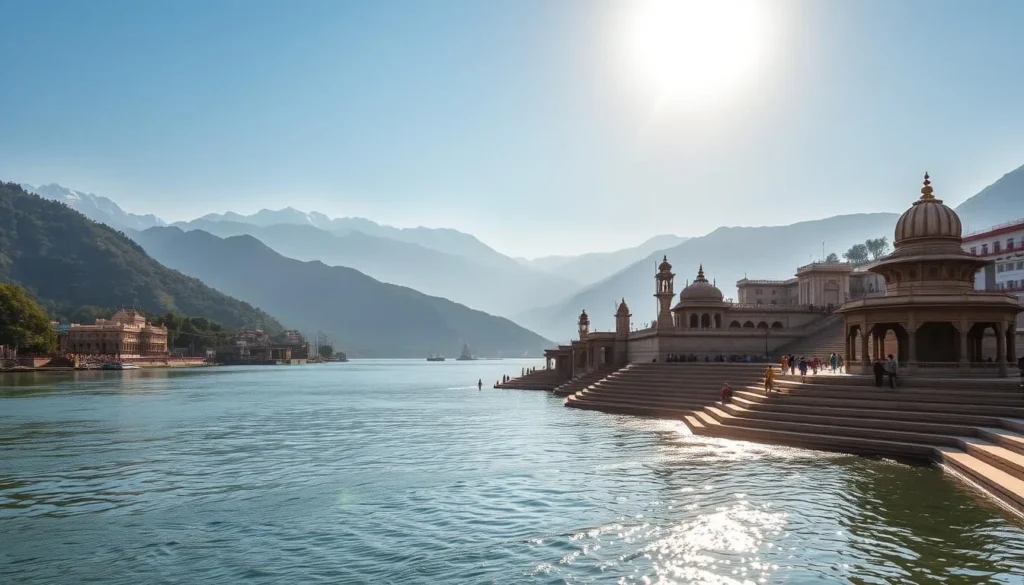
The Mystical Three Rivers
The Tribeni Ghats is where three rivers converge, creating a mystical atmosphere. This confluence is believed to possess spiritual cleansing properties, attracting pilgrims to bathe in its sacred waters. The serene environment surrounding the river is perfect for contemplation and spiritual rejuvenation.
Religious Rituals and Ceremonies
The ghats are surrounded by numerous shrines and temples, predominantly dedicated to Shiva, as evident from the abundance of lingams in the area. Throughout the year, various religious rituals and ceremonies take place, including the annual ceremony at the end of the monsoon season when the Brahmayani goddess is paraded in a chariot around the town. These rituals underscore the significance of Tribeni Ghats as a living center of spiritual practice.
Walking Through Panauti’s Ancient Streets
As you wander through Panauti’s ancient streets, you’ll feel like you’ve stepped back in time. The town’s historic charm is palpable, with its brick-paved roads and traditional Newari architecture.
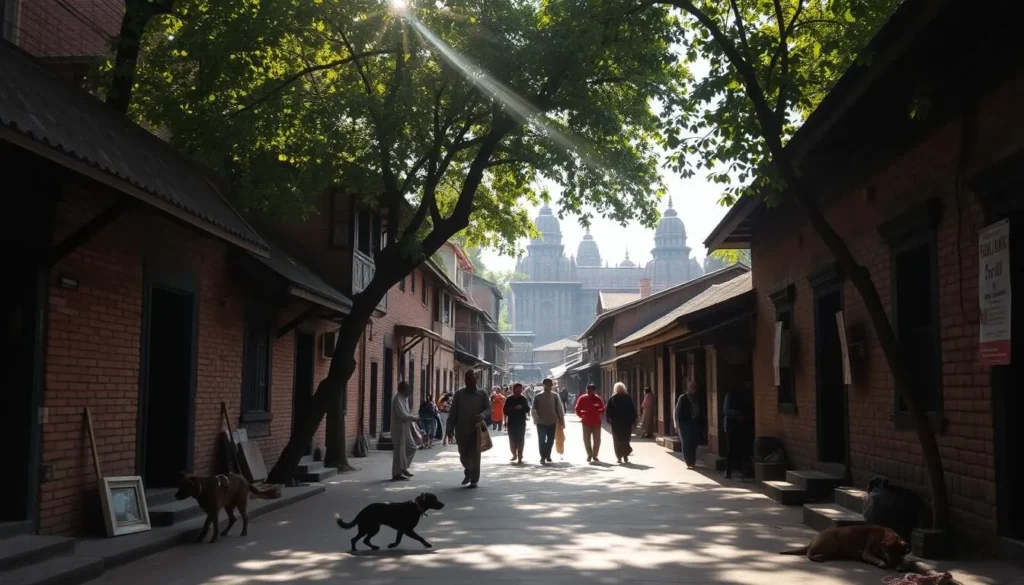
Self-Guided Heritage Walk Route
A self-guided heritage walk is the best way to experience Panauti’s rich cultural heritage. Starting from the Rosi stream, you can walk east along the road and discover a plethora of rest houses, shrines, and traditional Newari buildings. The walk allows you to observe local life, including traditional activities like rice threshing on the brick streets during harvest season.
The walk is relatively easy, and you can take your time to appreciate the intricate carvings, ornate doorways, and other architectural details that characterize Panauti’s ancient town.
Notable Buildings and Architecture
Panauti is renowned for its well-preserved traditional Newari architecture, which includes multi-story brick buildings, intricately carved wooden windows, and courtyards. Many of these buildings have remained unchanged for hundreds of years, preserving their original features.
| Architectural Feature | Description | Significance |
|---|---|---|
| Intricately Carved Wooden Windows | Showcasing Newari craftsmanship | Highlighting the town’s rich cultural heritage |
| Ornate Doorways | Featuring intricate carvings and designs | Adding to the town’s medieval atmosphere |
| Multi-Story Brick Buildings | Characterizing traditional Newari architecture | Preserving the town’s original architectural features |
Visit the Panauti Museum
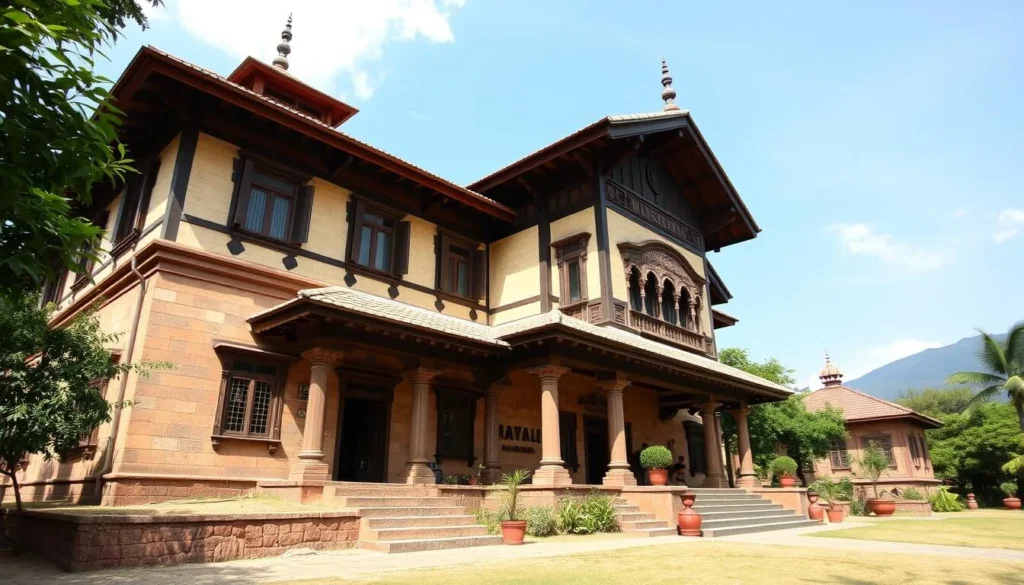
Panauti’s museum is a treasure trove of historical artifacts and exhibitions that bring the town’s story to life. As you explore the museum, you’ll be struck by the exceptional organization and presentation of the exhibits.
Historical Artifacts and Exhibitions
The museum boasts an impressive collection of historical artifacts, including exquisite showpieces from Panauti’s past. Every item is carefully labeled, lit, and displayed to create an engaging and educational experience. The exhibits effectively tell the story of Panauti’s development over the centuries, from its founding to the present day.
Why This Museum Stands Out in Nepal
What sets the Panauti Museum apart is its dedication to creating a truly immersive experience. The staff, including the friendly Osin Tamrakar at the front desk, are passionate about sharing their knowledge with visitors. Compared to other museums in Nepal, the Panauti Museum is head and shoulders above the rest, with its meticulous curation and maintenance making it a must-visit destination. The museum also highlights ongoing archaeological work in Panauti, particularly around the Durbar Square area, where excavations have revealed the foundations of the old palace and temples.
Durbar Square and Surrounding Temples
As you explore Panauti, you’ll discover the historic Durbar Square, a hub of cultural and architectural significance. This ancient square is surrounded by numerous temples, each with its own unique history and architectural style.
The Pashupatinath Temple
The Pashupatinath Temple, located within the Durbar Square area, is one of the most revered sites in Panauti. This temple is dedicated to Lord Shiva and is an exemplary model of Nepalese architecture. Visitors can marvel at the intricate carvings and ornate details that adorn the temple.
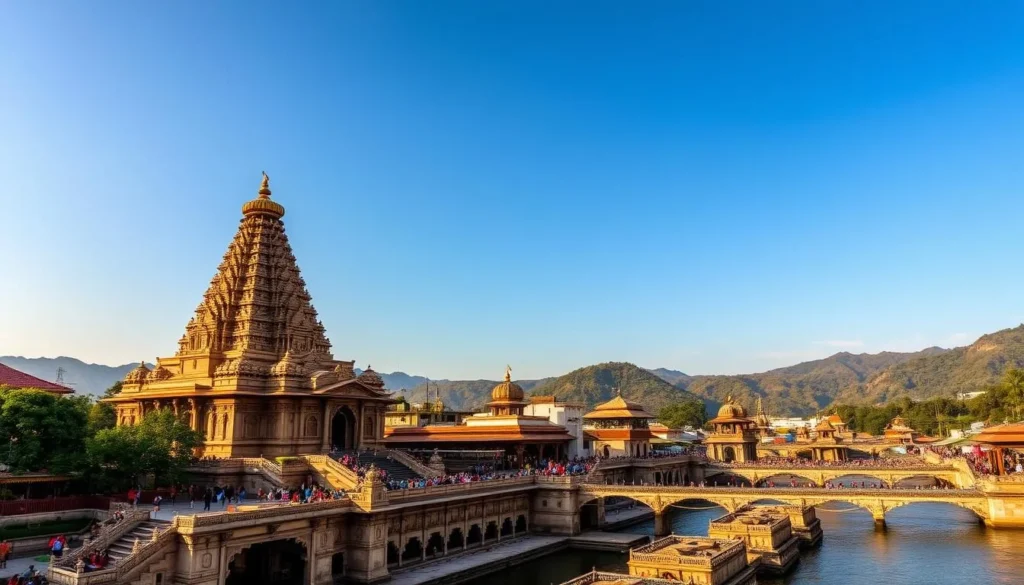
Ongoing Restoration Projects
The reconstruction of Durbar Square and the palace is currently in its early stages, thanks to the funding and support from the French Embassy. Over the years, the French government has been a major contributor to the restoration work in Panauti, spanning nearly a decade. The restoration efforts aim to revive the square’s former glory while preserving its authenticity.
- Archaeological excavations have revealed the foundations of the original structures, providing valuable insights into the square’s history.
- The restoration process involves skilled craftspeople who work with traditional methods and materials to maintain the site’s authenticity.
| Restoration Aspect | Description | Status |
|---|---|---|
| Funding | Supported by the French Embassy | Ongoing |
| Archaeological Work | Excavations to reveal original structures | In Progress |
| Craftsmanship | Traditional methods and materials used | Ongoing |
Hiking Adventures Around Panauti
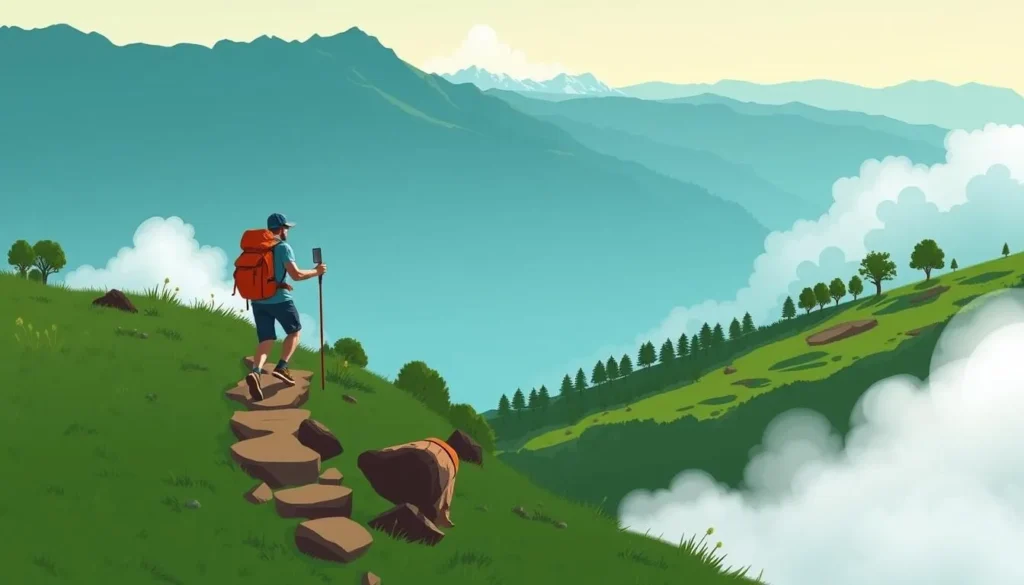
Panauti offers some exciting hiking adventures that allow you to explore the surrounding countryside. The trails around Panauti provide a unique blend of natural beauty and cultural experiences.
Sanga to Panauti Trail
The Sanga to Panauti trail is a scenic route that takes you through picturesque villages and lush landscapes. This trail is ideal for those looking for a leisurely hike with minimal elevation gain.
Panauti to Namo Buddha Hike
The hike from Panauti to Namo Buddha is a significant trip that offers breathtaking views of the Himalayas. The trail is approximately 3-4 hours one way and involves a gradual uphill climb of about 250 meters through fields and forests. Namo Buddha is a sacred Tibetan Buddhist site where, according to legend, Buddha sacrificed himself to feed a starving tigress and her cubs. The base camp-like atmosphere at Namo Buddha, with its clean environment and fresh air, provides a refreshing contrast to more crowded tourist areas. Visitors can explore the impressive Thrangu Tashi Yangtse Monastery and enjoy a delicious meal at the monastery’s dining hall.
Whether you’re an avid hiker or just looking for a relaxing hiking experience, Panauti has something to offer. The trails around Panauti are a great way to experience the natural beauty and cultural richness of Nepal.
Experience a Community Homestay
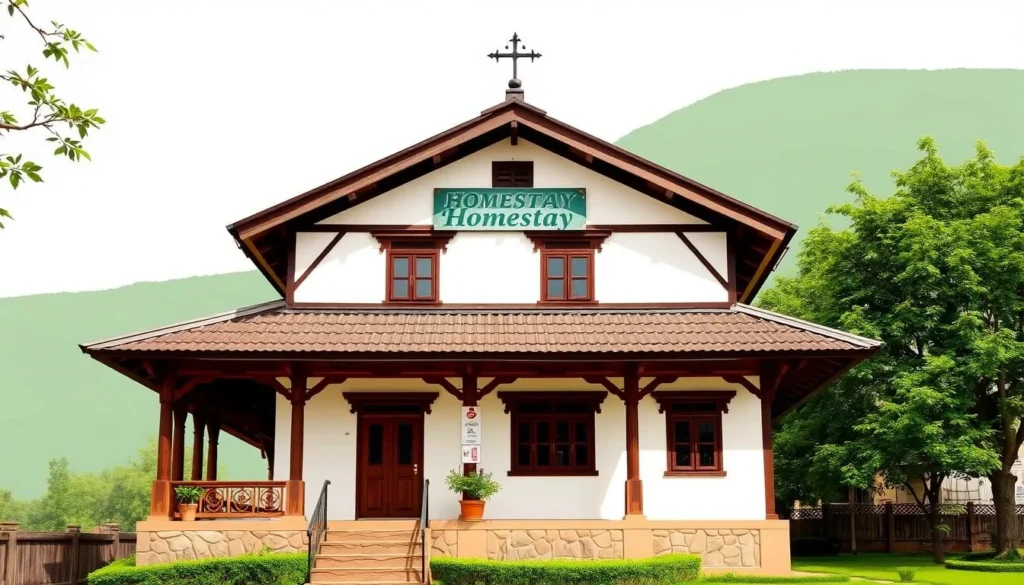
Panauti’s Community Homestay offers a unique opportunity to live with local families and dive into the rich cultural heritage of this ancient town. By staying in authentic homes run by Nepali women, you can experience the daily life and traditions of the Newari community.
Living with Local Families
When you stay with a local family through the Panauti Community Homestay, you’ll enjoy modern amenities like Wi-Fi, hot water, and cable TV, alongside traditional Newari hospitality. This blend of comfort and culture allows you to truly immerse yourself in the local way of life.
Cultural Immersion Opportunities
The Panauti Community Homestay program is designed to provide a deep cultural immersion experience. You can participate in daily household activities, from helping prepare traditional meals to joining in evening rituals. Your hosts will share their knowledge of Newari customs, traditions, and religious practices, giving you a unique insight into the local culture.
Some of the cultural immersion opportunities include:
- Participating in traditional cooking classes
- Attending or observing local religious ceremonies and festivals
- Learning traditional Newari dances or music
- Engaging in language exchange with your host family, learning Nepali phrases while they practice their English
By staying with a family, you’ll gain insights into Nepali family structures, values, and daily life that are impossible to experience in a hotel. These cultural immersion experiences create deeper connections to the place and its people, transforming your visit into a meaningful cross-cultural exchange.
Culinary Experiences in Panauti
The culinary delights of Panauti are a reflection of its rich cultural heritage and community spirit. As you explore this ancient town, you’ll have the opportunity to experience the local Newari cuisine, known for its unique flavors and traditional cooking methods.
Traditional Newari Cuisine
Traditional Newari cuisine is a highlight of Panauti’s culinary scene, offering dishes that are both flavorful and culturally significant. You can savor local specialties such as momos (dumplings) and dal bhat (lentils and rice), which are staples of Nepali cuisine.
Cooking Classes with Local Hosts
Cooking classes with local hosts provide a hands-on experience, allowing you to learn the art of preparing traditional Newari dishes. Through the Panauti Community Homestay program, you can participate in cooking classes where you’ll shop for ingredients in local markets, prepare meals under the guidance of experienced cooks, and enjoy the fruits of your labor together. This immersive experience not only teaches you about local culture but also fosters connections with the community.
Cycling Around the Medieval Town
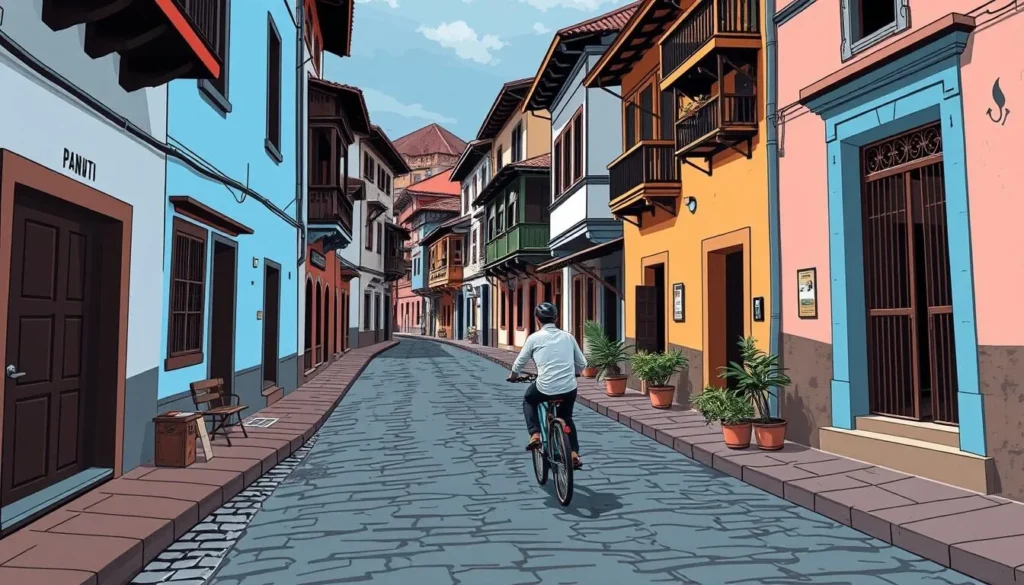
Discover the charm of Panauti on two wheels, exploring its medieval landscape with ease. Cycling is an ideal way to experience the town’s historic charm and scenic beauty.
Popular Cycling Routes
Panauti offers several cycling routes that cater to different interests and fitness levels. You can start your journey from the Panauti Bike Station, conveniently located near the bus park. The routes take you through a mix of scenic roads, markets, vintage buildings, farms, and temples, providing a comprehensive view of the local culture and lifestyle.
Bike Rental Information
To rent a bike, visit the Panauti Bike Station near the bus park. They offer a variety of bikes, including mountain bikes suitable for the sometimes uneven roads around Panauti. The rental process is straightforward: you can rent a bike for half a day or a full day at a cost of approximately 500-1000 rupees per day. Be sure to bring identification and a deposit. Here are some tips for a smooth rental experience:
- Check the bike’s condition before setting out.
- Wear appropriate clothing and a helmet for safety.
- Carry water and be aware of local traffic patterns.
- Consider cycling during the early morning or late afternoon to avoid the midday heat.
For a hassle-free experience, you can also arrange your biking trail with a local guide through a homestay. This not only enhances your cycling experience but also supports local tourism initiatives.
Festivals and Cultural Events in Panauti
Visiting Panauti during its festivals is an experience like no other, offering a glimpse into the town’s rich traditions. The town celebrates various festivals with great fervor, reflecting its cultural and religious heritage.
Panauti Jatra Festival
The Panauti Jatra Festival is a significant event in the town’s cultural calendar. This festival is celebrated with traditional rituals and ceremonies, drawing visitors from around the region. The festival transforms the town, with decorated temples and community gatherings that offer a unique insight into Panauti’s living heritage.
Yomari Festival and Other Celebrations
Another popular festival in Panauti is the Yomari festival, celebrated in December to mark the harvest season. Yomari, sweet rice dumplings shaped like fish or other symbolic forms, are a cultural specialty. Panauti also observes other important festivals like Dashain, Tihar, and Buddha Jayanti, each bringing the community together. These festivals provide a unique opportunity to experience Panauti’s cultural practices and religious beliefs that have been preserved for centuries.
| Festival | Time of Year | Significance |
|---|---|---|
| Panauti Jatra | April | Celebrates the town’s founding |
| Yomari Festival | December | Marks the harvest season |
| Dashain | September/October | Celebrates the goddess Durga |
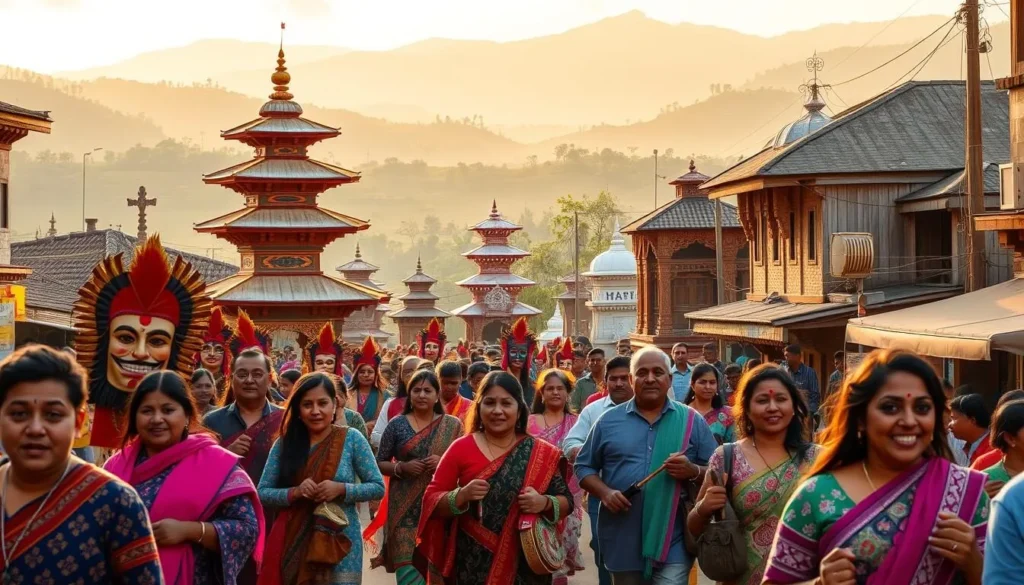
Day Trips from Panauti
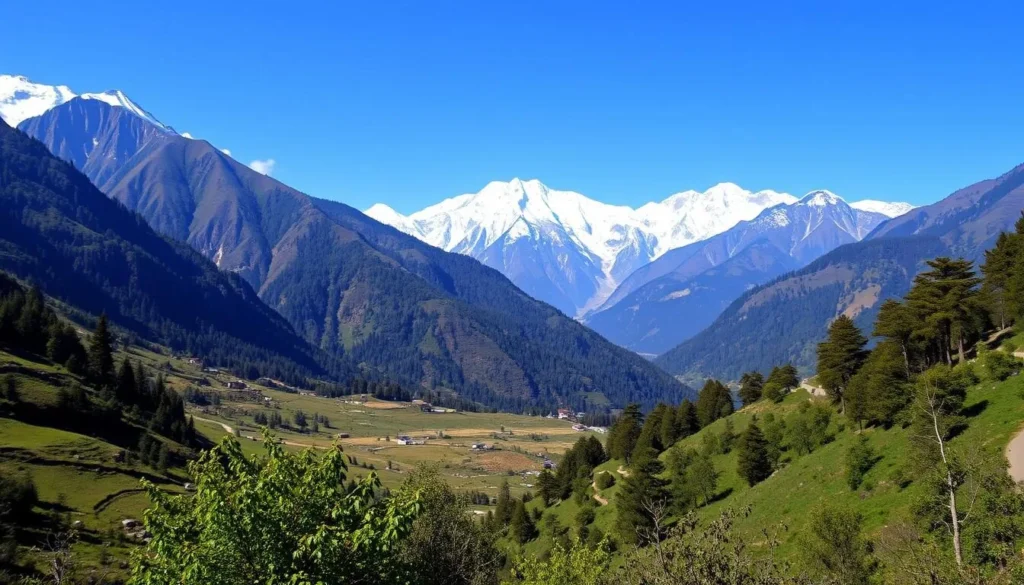
Day trips from Panauti reveal a diverse range of experiences, from sacred sites to panoramic views. The area is rich in cultural heritage and natural beauty, making it an ideal base for exploration.
Namo Buddha Monastery
Namo Buddha Monastery is a significant sacred site located near Panauti. The monastery is known for its large Thrangu Tashi Yangtse Monastery, where monks perform worshipping ceremonies. You can enjoy the fresh air and the stunning views of the snow-capped Himalayas.
Other Nearby Attractions
Several other attractions make for excellent day trips from Panauti. Dhulikhel, just 8 kilometers away, offers spectacular Himalayan panoramas that rival views from trekking routes like the Annapurna Base Camp. Bhaktapur, one of the three ancient kingdoms of the Kathmandu Valley, is known for its well-preserved Durbar Square and traditional Newari architecture.
Other destinations include Sanga, home to the world’s tallest Shiva statue, and Balthali Village, which offers great hiking opportunities. Phulchowki, the highest hill around the Kathmandu Valley, is ideal for nature lovers with its rich biodiversity.
You can combine multiple nearby attractions for a full-day excursion. For example, visiting Namo Buddha and Dhulikhel in the same day is a great way to experience the best of the region.
Where to Stay in Panauti
Accommodation in Panauti caters to different needs, from cultural immersion to comfort. You can choose from a variety of options that allow you to experience the rich heritage of this medieval town.
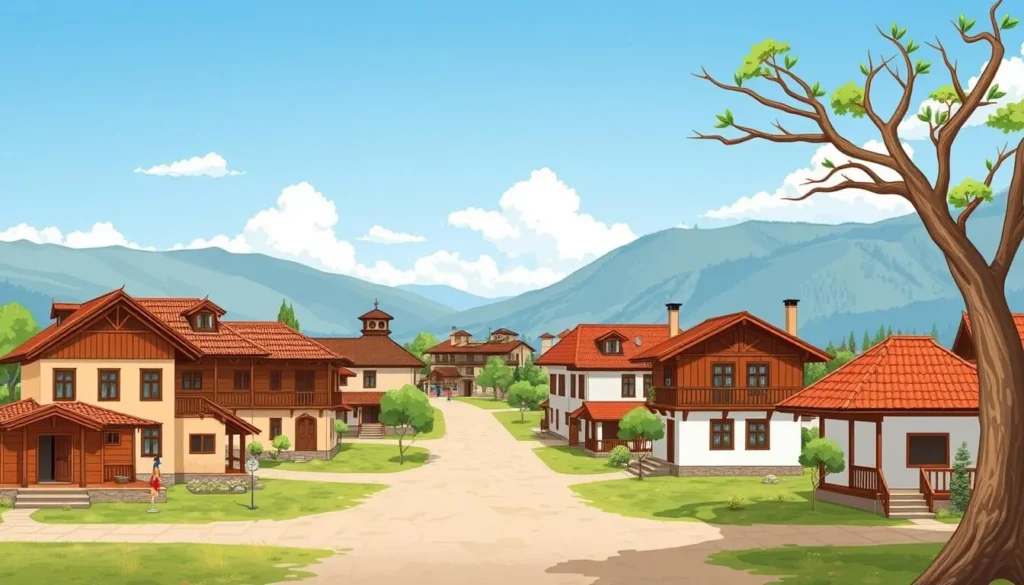
Homestay Options
Panauti Community Homestay is a great way to experience the local Newari culture. You stay with Nepali women-run authentic homes, enjoying modern amenities like Wi-Fi and hot water. This option provides a unique cultural immersion opportunity, allowing you to live and eat with local families.
Hotels and Guesthouses
For those preferring more conventional accommodations, Panauti has a few small hotels and guesthouses. Hotel Panauti and Panauti Guest House are examples, offering comfortable stays with rates around $20-$50 per night. While they provide more privacy, they offer less cultural exchange than homestays. Today, you can book these hotels online through major travel websites. Here are some tips: book in advance during peak tourist season, and check the location relative to main attractions.
Conclusion: Why Panauti Deserves More Than a Day Trip
Stepping into Panauti is like stepping back in time. This ancient town offers a unique blend of history, culture, and spirituality that can’t be fully appreciated in a quick day trip. To truly experience Panauti’s charm, you need time to wander its heritage streets, visit its temples, and interact with locals. Staying overnight allows you to enjoy the town’s magical morning and evening hours. With its rich cultural heritage and nearby attractions like Namo Buddha, Panauti is a destination that deserves a leisurely trip.
The above is subject to change.
Check back often to TRAVEL.COM for the latest travel tips and deals.
